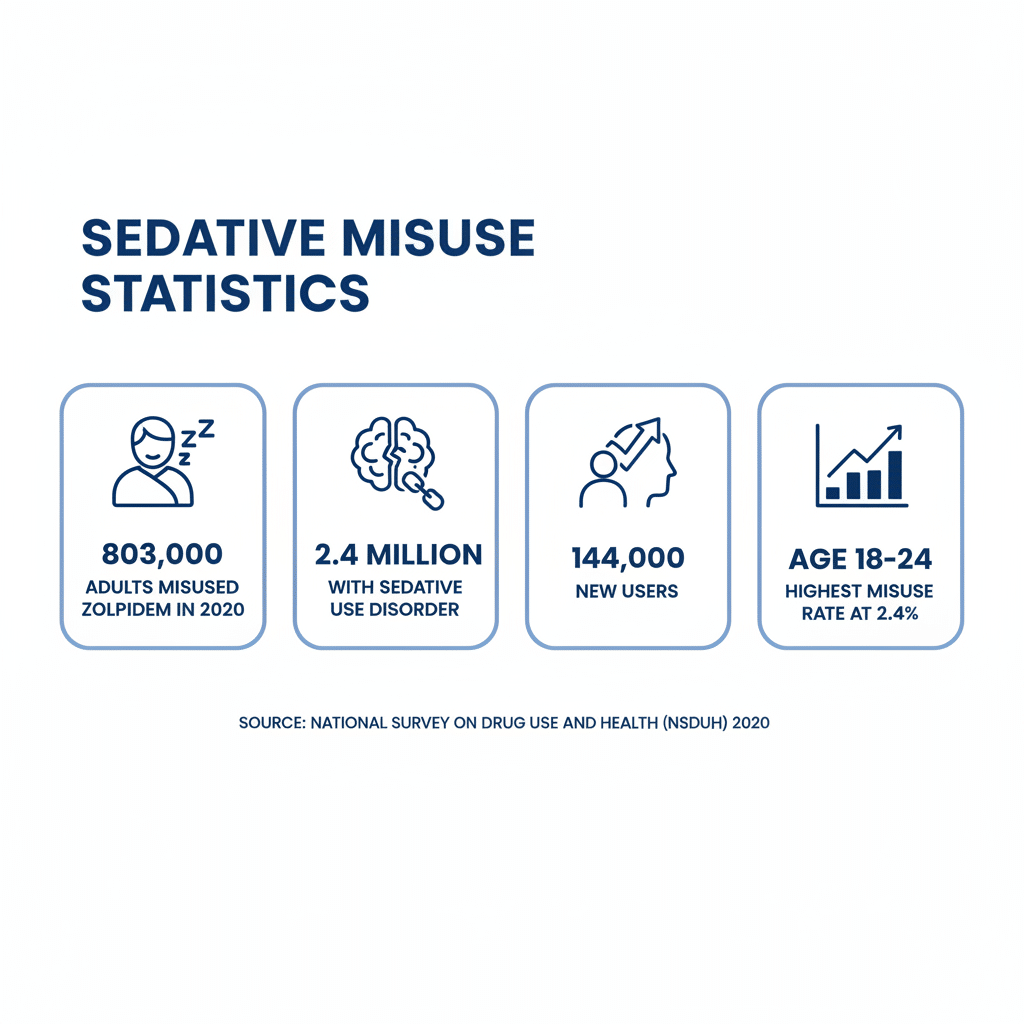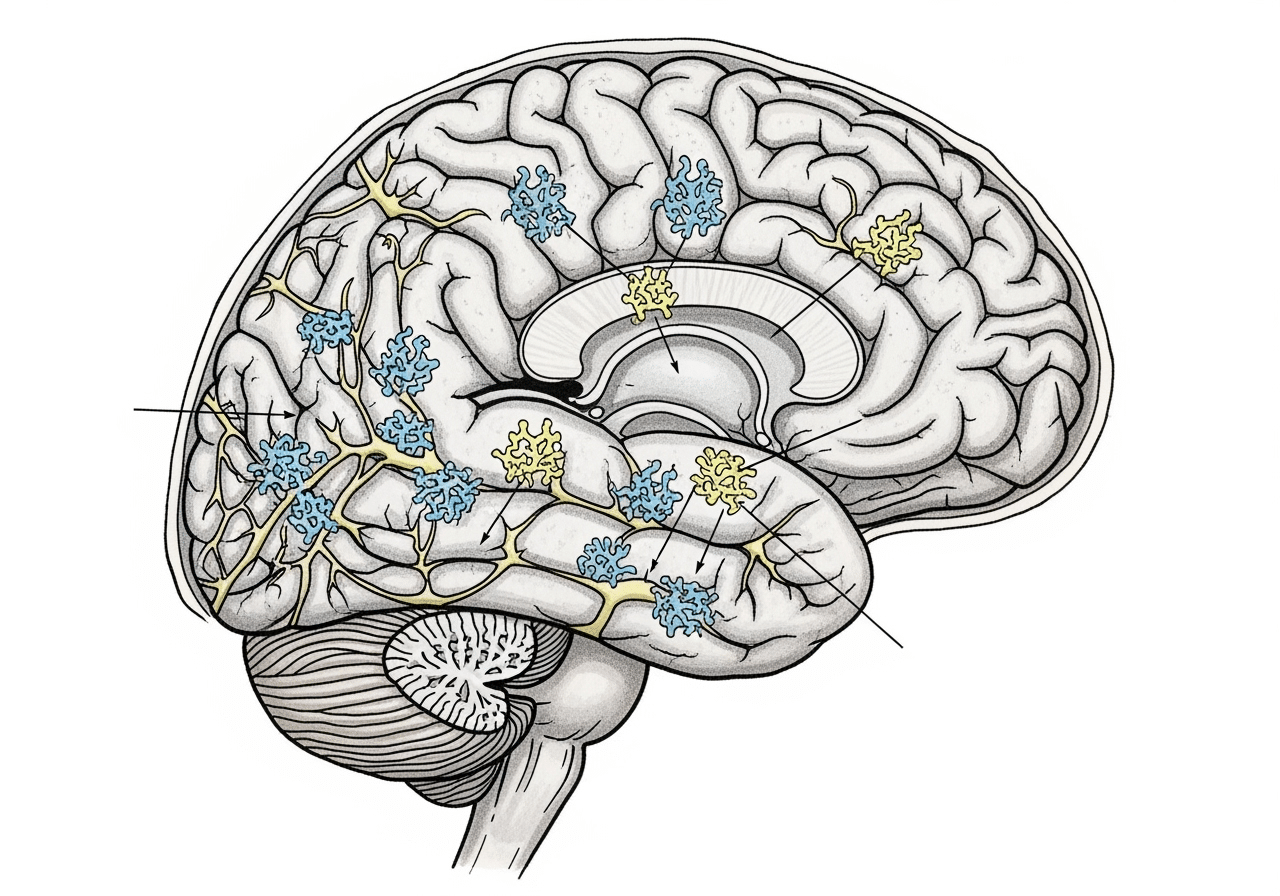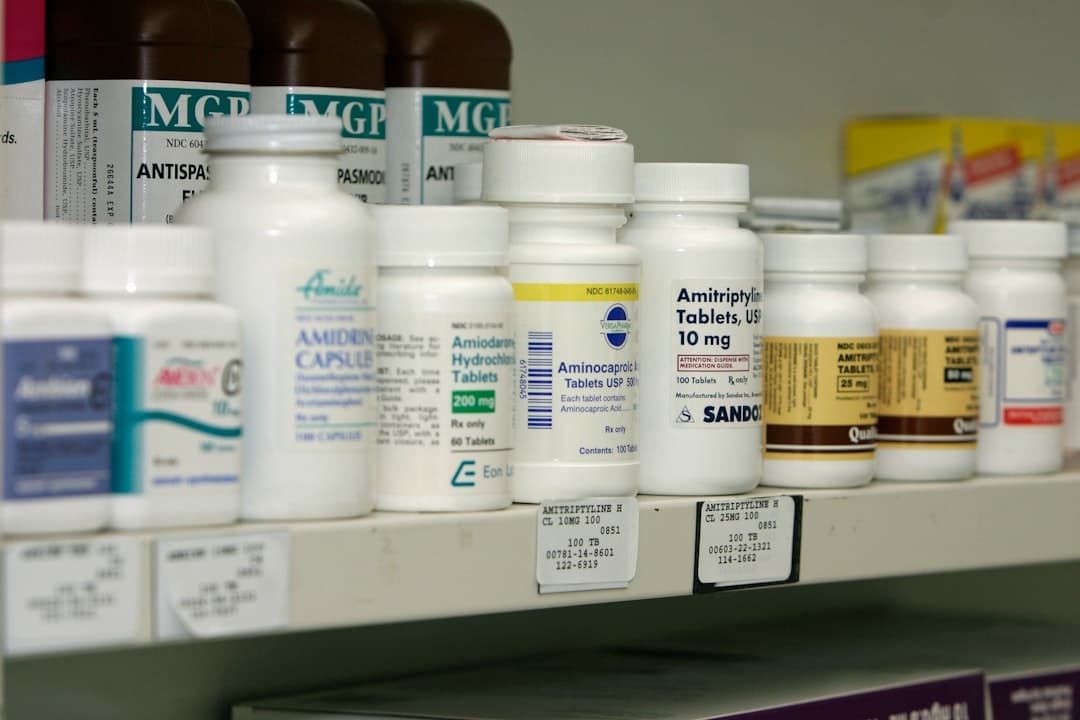Your Journey to a Healthier Life Starts Here
Free Insurance Verification
Verify Your Treatment Coverage
Verify Your Treatment Coverage
Ambien Treatment is a critical intervention for individuals who have developed dependence on this widely prescribed sleep medication. If you or a loved one is struggling with Ambien use, here’s what you need to know:
Key Facts About Ambien Treatment:
Ambien (zolpidem tartrate) is a prescription sedative medication intended for the short-term treatment of insomnia. While it helps millions fall asleep faster, the drug carries serious risks that many people don’t fully understand. What starts as a legitimate prescription can evolve into physical dependence and addiction, especially when used longer than recommended or at higher doses.
The medication works by affecting GABA receptors in the brain, essentially slowing down brain activity to induce sleep. However, this same mechanism that makes Ambien effective also makes it habit-forming. In 2020 alone, approximately 803,000 adults reported misusing zolpidem products. Nearly 2.4 million people in the U.S. have developed a prescription sedative use disorder.
Perhaps most concerning are the complex sleep behaviors associated with Ambien—activities like sleep-driving, sleep-eating, or making phone calls while not fully awake. The FDA added a boxed warning to Ambien’s label in 2019 after identifying at least 20 deaths resulting from these behaviors.
At Addiction Helpline America, we’ve helped thousands of individuals and families steer the challenging journey of Ambien treatment and recovery, providing confidential support and connecting people with evidence-based treatment programs. Our team understands that overcoming sedative dependence requires specialized care, not willpower alone.

When your doctor hands you a prescription for Ambien (zolpidem tartrate), it’s meant to be a short-term lifeline for those sleepless nights. This medication belongs to a class of drugs called “Z-drugs”—non-benzodiazepine hypnotics designed specifically for people who can’t fall asleep. For many, it works beautifully at first. But here’s the thing: what starts as a helpful solution can quietly transform into something much more complicated.
The path from prescription to dependence isn’t always dramatic. It’s often gradual, almost imperceptible. Your body begins building tolerance. You need a bit more to get the same effect. Before you know it, you can’t sleep without it. This is where Ambien treatment becomes not just helpful, but necessary. Let’s explore how this happens and what warning signs to watch for.

Ambien improves the effect of gamma-aminobutyric acid (GABA), the brain’s primary “calm down” signal. By targeting specific GABA-A receptors, it slows brain activity, creating a sedative-hypnotic effect that helps you fall asleep. This makes Ambien a central nervous system depressant.
When used as intended for short-term insomnia, it helps with sleep onset (falling asleep quickly). The extended-release version, Ambien CR, also helps with sleep maintenance (staying asleep). However, Ambien was never meant for long-term use, as the body adapts over time.
For more comprehensive information about how Ambien misuse develops, visit our page on Ambien Abuse.
The line between use and misuse is thin. Misuse can be as simple as taking higher doses than prescribed or using Ambien without a prescription. Some people engage in “doctor shopping” for multiple prescriptions or use it for the mild euphoria it can cause.
When misuse becomes regular, addiction can develop. Signs include intense cravings, neglecting responsibilities, and continued use despite negative consequences like concern from loved ones or close calls while driving. You may have tried to stop but found you couldn’t sleep without it, or you need higher doses for the same effect—that’s tolerance. If this sounds familiar, professional Ambien treatment can help.
For more detailed information about recognizing addiction, visit our page on Ambien Addiction.
Even when taken as prescribed, side effects like drowsiness, dizziness, diarrhea, and grogginess can occur. More concerning is next-day impairment. Your reaction time and judgment can be compromised even if you feel fine, which is why the FDA warns against driving without a full seven to eight hours of sleep.


Take the first step towards a healthier life! Call now to connect with our compassionate team and start your recovery journey today. Your path to healing awaits!
Our recovery specialists are available 24/7 to provide support, and all calls are confidential and free. Reach out anytime – we’re here to help!
Memory loss (anterograde amnesia) is another unsettling side effect, causing you to forget events that happened while the drug was active.
The most alarming risks prompted the FDA’s strongest boxed warning in 2019. This involves complex sleep behaviors: activities performed while not fully awake, with no memory of them later. These behaviors include:
Sleep-driving, sleep-eating (including cooking while asleep), making phone calls, having conversations, and engaging in sexual activity.
The FDA identified at least 20 deaths from these behaviors. If you experience any complex sleep behaviors, discontinue Ambien immediately and seek medical attention. This is a medical emergency.
Long-term use also carries risks like worsening sleep apnea, acid reflux, and chronic sinus issues. The message is clear: Ambien was never designed as a permanent solution to insomnia.
For detailed information about all potential side effects, visit our page on Ambien Side Effects. You can also read the FDA’s direct consumer update on complex sleep behaviors associated with Z-drugs like Ambien.
Understanding these risks is the first step. If you’re concerned about your Ambien use, reaching out for professional help is the smart, safe choice.
Stopping Ambien isn’t like quitting coffee; quitting “cold turkey” can be dangerous if your body is dependent. When the chemical support Ambien provides is suddenly removed, your brain can go into overdrive. This is why professional Ambien treatment is a medical necessity, not a matter of willpower. It’s about protecting your health. At Addiction Helpline America, we connect people with programs that understand sedative dependence. For comprehensive information, visit our page on Ambien Addiction Treatment.
When you stop taking Ambien after dependence has formed, your brain’s overactivity can cause severe symptoms. The most common is rebound insomnia, often worse than the original problem. Other withdrawal symptoms include severe anxiety, panic attacks, agitation, irritability, tremors, sweating, nausea, and stomach cramps. In some cases, disorientation, hallucinations, or even delirium can occur.
The most dangerous withdrawal symptom is the risk of seizures, which can be life-threatening. This is why detoxing at home without medical supervision is extremely risky. Withdrawal symptoms can start within 6-8 hours, peak in 1-5 days, and subside over 1-2 weeks, but the timeline varies per individual.
Understanding these challenges makes it clear why professional support is vital. Learn more on our Ambien Withdrawal Symptoms page.
Given the risk of seizures, medical detox is the essential first step in any effective Ambien treatment program. It provides round-the-clock monitoring by healthcare professionals who can intervene if complications arise.
The core of safe detox is a gradual taper, where the dosage is slowly reduced over time. This gives your brain time to adjust, minimizing withdrawal severity and seizure risk. Sometimes, a longer-acting sedative is substituted for a smoother taper. The medical team can also provide medications to ease specific symptoms, making the process safer and more comfortable, which helps prevent relapse.
Detox stabilizes you physically so you can begin the therapeutic work of recovery. For more detailed information on this critical first step, please visit our Ambien Detox page.
After detox, the deeper work of recovery begins. Comprehensive Ambien treatment addresses the root causes of use and teaches healthier coping strategies. Key therapies include:
To explore the various rehabilitation options available, please visit our Ambien Rehab page.
For Ambien treatment to be safe, understand who is most at risk and which substance combinations are dangerous. Mixing Ambien with other substances can be deadly, as it multiplies the risks.

Ambien affects different people in different ways.
Ambien is a central nervous system (CNS) depressant. Combining it with other CNS depressants multiplies its effects, creating a potentially lethal combination.
An overdose, especially with other substances, causes symptoms like impaired consciousness and dangerously slowed breathing. This is a medical emergency requiring an immediate 911 call. Being honest with providers about all substances you use is essential for your safety. For detailed information, visit our page on Ambien Overdose Symptoms.
We understand that uncertainty can be overwhelming. Here are clear, honest answers to some of the most common questions we hear.
No, dependence is not inevitable. When taken exactly as prescribed—at a low dose for a short period (typically 2-6 weeks)—the risk is relatively low. However, the risk increases significantly with long-term use, higher doses, or any misuse. Ambien is a Schedule IV controlled substance, meaning it has a recognized potential for abuse and dependence.
Complex sleep behaviors are activities you do while not fully awake, with no memory of them later. This can include sleep-driving, sleep-eating, making phone calls, or having conversations. These behaviors are a serious safety concern and prompted the FDA to issue its strongest “boxed warning” after they led to serious injuries and deaths. If you experience this, stop taking Ambien immediately and contact a doctor.
No, we strongly advise against stopping Ambien on your own, especially after long-term or high-dose use. Abruptly quitting can trigger severe and dangerous withdrawal symptoms, including rebound insomnia, intense anxiety, and life-threatening seizures. The safest method is a medically supervised taper, where a healthcare professional gradually reduces your dose. This is what professional Ambien treatment provides: a safe path to discontinuing the medication.
For comprehensive guidance on safely discontinuing Ambien, visit our page on Ambien Addiction Treatment. Reaching out for help is one of the smartest decisions you can make for your health.
Ambien can be a helpful short-term tool for insomnia, but it carries significant risks, from dependence and addiction to dangerous complex sleep behaviors and life-threatening withdrawal. The dangers are amplified when mixed with substances like alcohol or opioids.
However, recovery from Ambien dependence is entirely possible. People find their way back to restorative, drug-free sleep every day. The path forward begins with seeking professional help.
Professional Ambien treatment provides a safe, medically supervised detox to manage withdrawal and prevent complications like seizures. Afterward, therapies like Cognitive Behavioral Therapy for Insomnia (CBT-I) address the root causes of your sleep issues, teaching you to sleep naturally again without medication. Individual and group counseling provide support and tools for lasting recovery.
At Addiction Helpline America, we understand this journey. Our team offers free, confidential guidance to connect you with our nationwide network of treatment centers. We’re here to listen and help you find the right program for your unique needs. You deserve to wake up clear-headed and present for your life, free from dependence.
If you’re ready to take the first step, reach out to us today. There’s no pressure, just compassionate support. Your journey to restful, drug-free sleep is possible, and we can help you start. Find the right behavioral health treatment program for you.
The path to drug-free sleep is real, and it’s waiting for you. Let’s walk it together.
Are you or a loved one struggling with addiction? Call today to speak to a treatment expert.
Calls to any general helpline will be answered or returned by one of the treatment providers listed, each of which is a paid advertiser:
Our helpline is available 24 hours a day, 7 days a week at no cost to you and with no obligation for you to enter into treatment. We are committed to providing support and guidance whenever you need it.
In some cases, Addiction Helpline America charges our verified partner a modest cost per call. This fee helps us cover the costs of building and maintaining our website, ensuring that we can continue to offer this valuable service to those in need.
Calls to the general helpline will be answered or returned by one of the listed treatment providers, all of whom are paid advertisers.
By using the helpline, you agree to the terms of use. We do not earn any commission or fee based on the treatment provider selected by the caller, and there is no obligation to pursue treatment.
This service is not affiliated with Alcoholics Anonymous World Services, Inc.